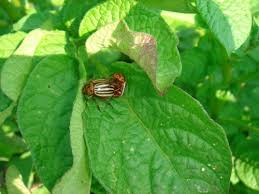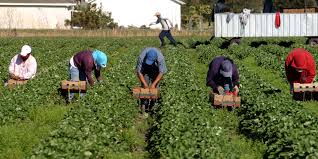Organic farming is a method of agriculture that avoids synthetic chemicals and promotes sustainable practices, focusing on the health of soil, plants, animals, and the environment. While organic farming offers many benefits, such as improved soil health, reduced pollution, and enhanced biodiversity, it also comes with its unique set of challenges.
These challenges can impact farmers’ ability to grow crops, raise animals, and maintain a profitable operation.
One significant challenge in organic farming is pest and disease control. Since synthetic pesticides and herbicides are not used, organic farmers rely on natural methods like crop rotation, biological control, and organic-approved treatments.
These methods are often less effective and can require more labor and time, increasing the risk of crop damage and reducing yields. Additionally, finding effective organic alternatives can be challenging and costly.
Soil fertility is another challenge, as organic farmers avoid synthetic fertilizers and depend on natural soil enhancers, such as compost and animal manure. Maintaining soil nutrients through these methods can be labor-intensive and may not provide the quick results that chemical fertilizers offer. This challenge can limit crop productivity, especially for large-scale farms.
Another issue is the increased labor and cost involved in organic farming. Organic farming methods generally require more hands-on management, such as manual weeding, monitoring pest levels, and maintaining soil health. This demand for labor can drive up costs, making organic farming more expensive than conventional farming.
Additionally, organic certification, which is essential for market access, is time-consuming and costly, adding financial strain on farmers.
Lastly, organic farmers may face market challenges, such as inconsistent demand and price fluctuations. Organic products are often more expensive, which can limit their market appeal and expose farmers to financial instability. Despite these challenges, many farmers are committed to organic farming for its environmental benefits, though it requires resilience, adaptability, and a long-term perspective.
Soil Fertility Management
Maintaining soil fertility is vital for the success of organic farming. Here are the key aspects and challenges related to soil fertility:
1. Nutrient Availability: Organic farmers rely on natural fertilizers like compost, manure, and cover crops to supply essential nutrients. However, the availability of these resources can vary based on season, location, and local regulations.
2. Nutrient Cycling: In organic systems, nutrient cycling is slower compared to conventional methods. This means that farmers must be diligent in managing soil health to ensure crops receive adequate nutrients throughout their growth cycle.
3. Soil Testing: Regular soil testing is necessary to monitor nutrient levels and pH balance. However, many small-scale farmers may lack access to testing facilities or the resources to amend soil effectively.
4. Organic Matter Depletion: Continuous cropping without proper management can lead to the depletion of organic matter. Organic farmers must implement practices to replenish this matter, such as adding compost or practicing crop rotation.
Pest and Disease Control

Managing pests and diseases without synthetic chemicals is one of the most significant challenges for organic farmers. Here are some key points related to pest and disease control:
1. Limited Options: Organic farmers have fewer pest control options compared to conventional farmers. While there are natural pesticides, they may not be as effective or quick-acting as synthetic alternatives.
2. Integrated Pest Management (IPM): Effective pest management often requires the implementation of IPM strategies, which can be complex and resource-intensive. This involves monitoring pest populations, using beneficial insects, and employing cultural practices to reduce pest pressure.
3. Disease Resistance: Some crops may be more susceptible to diseases, making it crucial for farmers to select disease-resistant varieties. However, this limits the range of crops that can be grown organically.
4. Climate Influence: Weather patterns significantly affect pest and disease prevalence. Increased rainfall or temperature fluctuations can lead to higher incidences of pests and diseases, complicating management efforts.
Crop Diversity and Rotation
Crop diversity and rotation are essential practices in organic farming that help enhance soil health and manage pests. However, they also present certain challenges:
1. Crop Selection: Selecting the right combination of crops for rotation can be challenging, especially in regions with specific climatic conditions. Farmers must carefully choose crops that complement each other and promote soil health.
2. Time and Labor: Implementing crop rotation and maintaining diverse plantings can be labor-intensive. Small-scale farmers may struggle to find the time and resources to manage multiple crops effectively.
3. Market Demand: Farmers may be hesitant to diversify their crops if there is uncertain market demand for certain varieties. Balancing market preferences with the benefits of diversity can be difficult.
4. Knowledge and Training: Many farmers may lack the knowledge or training to implement effective crop rotation strategies. Education and access to resources are vital to overcoming this challenge.
Market Access and Economic Viability
Market access and economic viability are critical factors that influence the success of organic farming. Here are some challenges related to these areas:
1. Certification Costs: Obtaining organic certification can be expensive and time-consuming, posing a barrier for small farmers. The costs associated with compliance and record-keeping can deter potential organic farmers.
2. Market Competition: As organic farming grows in popularity, competition increases. Farmers may struggle to differentiate their products in a crowded market, making it essential to develop effective marketing strategies.
3. Consumer Awareness: While consumer interest in organic products is rising, awareness about the benefits of organic farming may still be limited in some areas. Farmers may need to invest in educating consumers about their products.
4. Pricing Pressure: Organic products often command higher prices, but fluctuations in market prices can affect farmers’ profits. Ensuring economic viability requires careful planning and market analysis.
Certification and Regulatory Requirements
Obtaining organic certification is a vital step for farmers wanting to market their products as organic. However, this process comes with several challenges:
1. Complexity of Certification Process: The certification process can be complicated and time-consuming. Farmers must navigate various regulations and guidelines set by certifying bodies, which may differ from one region to another.
2. Costs Involved: Certification can be expensive due to fees for application, inspections, and record-keeping. These costs can be particularly burdensome for small-scale farmers with limited financial resources.
3. Compliance with Standards: Organic farmers must adhere to strict guidelines regarding soil management, pest control, and the use of inputs. Ensuring compliance requires ongoing education and awareness of evolving standards.
4. Record-Keeping Requirements: Farmers must maintain detailed records of their farming practices, inputs, and sales. This documentation can be overwhelming for those unfamiliar with administrative tasks.
Read Also: How to Use Rice Husk to Produce Electricity
Labor Shortages and Training Needs

Labor availability and training are significant challenges in organic farming. Here’s a closer look:
1. Limited Skilled Labor: Finding skilled laborers who understand organic practices can be challenging. Many workers may not have the necessary training or experience to meet the specific demands of organic farming.
2. Need for Continuous Training: Organic farmers often need to provide ongoing training for their employees to ensure they are familiar with organic practices, pest management, and compliance with certification standards.
3. Seasonal Labor Demand: Organic farming often involves seasonal work, making it difficult to attract and retain employees. Farmers may struggle to find reliable help during peak planting and harvesting times.
4. Economic Pressures: The rising cost of labor and the need for fair wages can strain small organic farms. Balancing labor costs with profitability is a constant challenge for many farmers.
Weather and Climate Challenges
Weather and climate variability significantly affect organic farming practices. Here’s how:
1. Climate Change Effects: Climate change leads to unpredictable weather patterns, which can impact crop yields. Organic farmers may experience challenges like drought, excessive rainfall, and temperature extremes.
2. Crop Vulnerability: Organic crops can be more susceptible to damage from extreme weather events due to their reliance on natural pest management and fertilizers. Farmers must develop strategies to mitigate these risks.
3. Water Management Issues: Organic farming often requires more intensive water management practices, especially in arid regions. Ensuring adequate water supply can be a challenge during dry spells or droughts.
4. Seasonal Variability: Changing weather patterns can affect planting and harvesting schedules, leading to uncertainty in crop production and market timing.
Read Also: How to Control Feeding Struggle among Fishes in the same Pond
Consumer Awareness and Demand

Consumer awareness and demand for organic products are crucial for the success of organic farming. Here are some challenges in this area:
1. Limited Consumer Knowledge: While interest in organic products is growing, many consumers may lack understanding of the benefits of organic farming. Educating the public about organic practices is essential for building demand.
2. Price Sensitivity: Organic products often come with higher price tags compared to conventional products. Some consumers may be reluctant to pay a premium, affecting sales for organic farmers.
3. Market Competition: The increasing popularity of organic farming has led to greater competition among farmers. Differentiating products in a saturated market can be challenging for small-scale producers.
4. Availability of Organic Products: In some regions, access to organic products may be limited, making it difficult for consumers to choose organic options. Farmers must find ways to improve distribution and market reach.
Organic farming offers numerous benefits, it also faces significant challenges that can impact its success. Understanding and addressing issues related to certification, labor, weather, and consumer awareness is crucial for farmers aiming to thrive in the organic sector.
Organic farming presents both opportunities and challenges for farmers seeking sustainable practices.
Soil fertility management, pest and disease control, crop diversity, and market access are key challenges that require careful consideration and strategic planning.
Do you have any questions, suggestions, or contributions? If so, please feel free to use the comment box below to share your thoughts. We also encourage you to kindly share this information with others who might benefit from it. Since we can’t reach everyone at once, we truly appreciate your help in spreading the word. Thank you so much for your support and for sharing!
Read Also: Underground Water and Aquifers
Frequently Asked Questions
We will update this section soon.

